Stick electrodes are available in a wide range of types, each of which provides different mechanical properties and operates with a specific type of welding power source. There are several factors to consider in welding rod selection:
Base metal properties
Welding position
Environmental Job Conditions
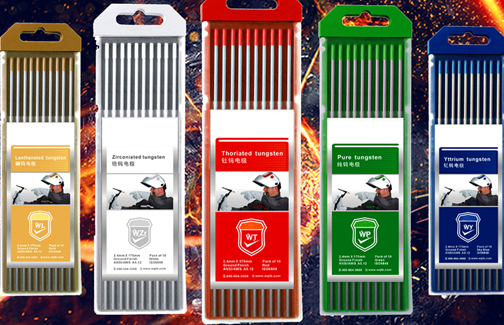
Tungsten Electrode
Base Metal Properties
The first step in choosing an electrode is to determine your base metal composition. Your goal is to match (or closely match) the electrode composition to the base metal type, which will help ensure a strong weld. If you’re in doubt about the composition of your base metal, ask yourself these questions:
What does the metal look like? If you’re working with a broken part or component, check for a coarse and grainy internal surface, which usually means the base material is cast metal.
Is the metal magnetic? If the base metal is magnetic, chances are good that the base metal is carbon steel or alloy steel. If the base metal is not magnetic, the material could be manganese steel, 300 series austenitic stainless steel, or a non-ferrous alloy such as aluminum, brass, copper, or titanium.
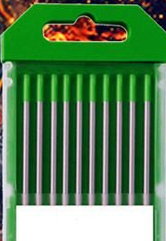
Pure Tungsten Electrode
What kind of sparks does the metal give off when touched by a grinder? As a rule of thumb, more flare in the sparks indicates a higher carbon content such as in A-36 grade steel.
Does a chisel “bite” into the base metal or bounce off? A chisel will bite into a softer metal, such as mild steel or aluminum, and bounce off of harder metals, such as high carbon steel, chrome-moly, or cast iron.
Welding Position
To determine what position(s) a particular electrode is qualified for, refer to the third digit in AWS classification. Here’s how you decipher the qualified electrode position:
1 = flat, horizontal, vertical, and overhead
2 = flat and horizontal only
For example, a 7018 electrode can be used in flat, horizontal, vertical, and overhead positions.
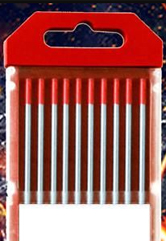
Thoriated Tungsten Electrode
Environmental Job Conditions
To achieve the best results, you should always remove excessive mill scale, rust, moisture, paint, and grease. Clean base metals help prevent porosity and increase travel speeds.
If cleaning your base metal is not possible, E6010 or E6011 electrodes deliver a deeply penetrating arc that has the ability to cut through contaminants.
Welding Electrode Storage
Electrodes should always be kept in a dry and well-ventilated store. It is good practice to stack packets of electrodes on wooden pallets or racks well clear of the floor. Also, all unused electrodes which are to be returned should be stored so they are not exposed to damp conditions to regain moisture.
Good storage conditions are 10°C above external air temperature. As the storage conditions are to prevent moisture from condensing on the electrodes, the electrode stores should be dry.
Under these conditions and in original packaging, electrode storage time is practically unlimited. Modern electrodes are now available in hermetically sealed packs which remove the need for drying. However, if necessary, any unused electrodes must be retried according to the manufacturer’s instructions
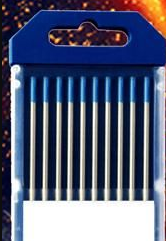
Lanthanated Tungsten Electrode
Drying of Electrodes
Drying is usually carried out in accordance with the manufacturer’s recommendations and requirements will be determined by the type of electrode.
Many electrodes are now available in hermetically sealed containers. These vacuum packs obviate the need for drying the electrodes immediately prior to use. If however the container has been opened or damaged, it is essential that the electrodes are re-dried according to the manufacturer’s instructions.
Electrode Selection
The electrode diameter selection is based on the workpiece thickness, welding position, joint form, welding layer, etc.
Welding current level is determined by the size of the electrode - the normal operating range and current are recommended by manufacturers.
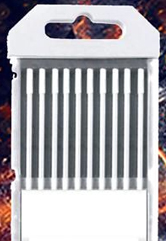
Zirconiated Tungsten Electrode
Electrodes should be dry and used according to the instructions.
This will reduce the hydrogen in the molten pool and welding seam, avoiding the blowholes and cold cracking.
In the welding process, the arc must not be too long; otherwise, it will cause unstable arc burning, large amounts of spatter, light penetration, undercut, blowholes, etc. If the arc is too short, it will cause the electrode to stick to the workpiece.
In MMA welding the arc length is usually equal to 0.5~1.0 times the diameter of the electrode. The basic electrode’s arc length is not more than the electrode diameter and short arc welding is preferred. When using acid electrodes the arc length is equal to the electrode diameter.












